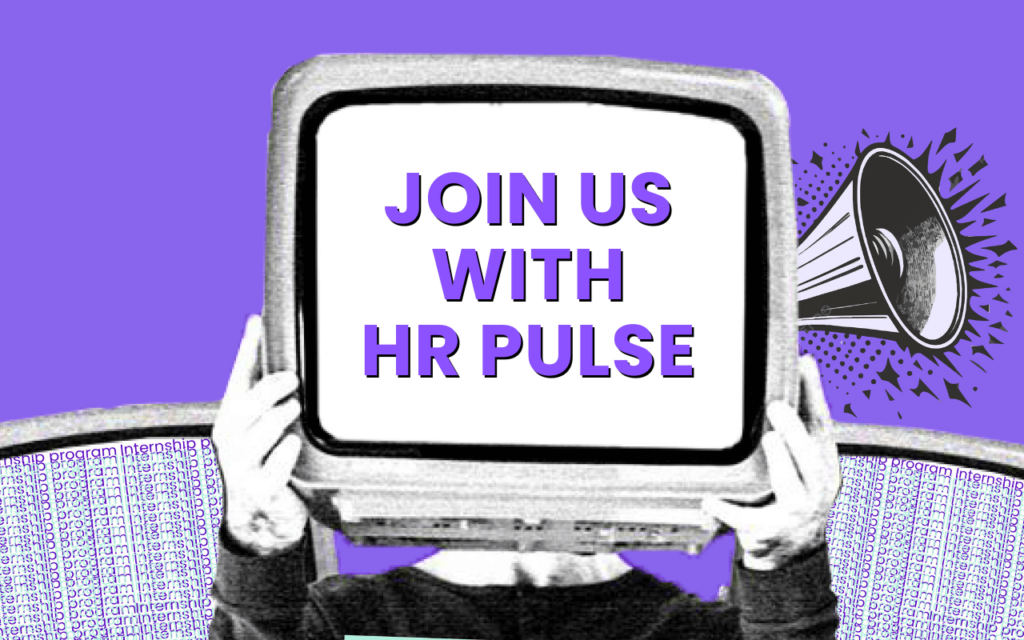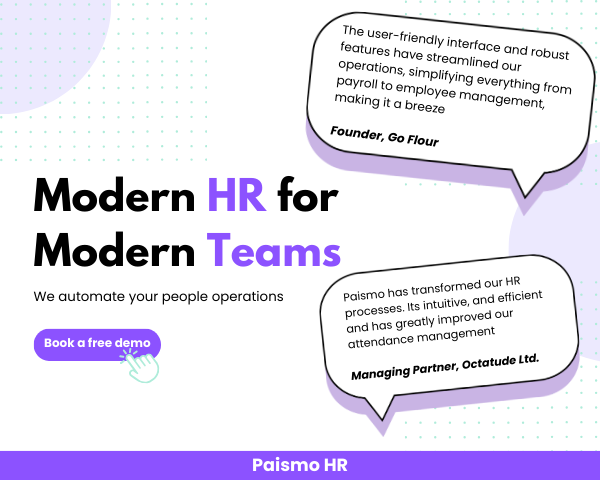Highlights
- A PIP template sets clear goals, expectations, and support for improving employee performance.
- It includes issues, action steps, support, and review timelines to track progress effectively.
- Use a PIP when employees underperform or transition into new roles needing improvement.
- Open communication, trust, and a positive mindset are key for successful PIP implementation.
Helping employees improve their performance starts with a clear and structured plan. A PIP template gives managers a practical way to set expectations, define goals, and offer consistent support, all in one place. When integrated into the company’s HR system, it addresses current performance challenges while supporting long-term employee growth and development.
In this article, we will explore the benefits of using a PIP template, when it’s appropriate to implement one, and provide role-based examples to support performance improvement across your team.
What Is a Performance Improvement Plan?
A Performance Improvement Plan (PIP) is a straightforward way to help employees get back on track. It outlines what needs to improve, how progress will be measured, and gives a timeline for change. The goal isn’t to punish but to offer a fair chance to improve with clear expectations. Many HR teams use an HRMS to keep things organized and make sure nothing gets missed. A PIP template can lead to real progress for the employee and the team.
What Should a PIP Template Include?
A well-structured performance improvement plan template should include all essential components that guide the employee toward measurable improvement. To begin with, it must clearly define the performance issues, using specific examples directly linked to job responsibilities, which avoids any confusion about expectations.
Following that, it’s essential to outline realistic, measurable goals and establish a timeline to monitor progress. In short, the template should also list the exact steps the employee needs to take, along with the support the company will provide, such as coaching, mentorship, or skill-building sessions.
Additionally, the plan should include scheduled review checkpoints to assess progress regularly. To keep everything transparent, it must also mention possible outcomes or consequences if goals are not met. Today, in many modern organizations using HR software in Pakistan, these elements are already integrated into the system to make documentation and follow-up much easier.
Download Now!
Benefits Of a Performance Improvement Plan
A Performance Improvement Plan (PIP) isn’t just a tool to correct issues. It’s also a powerful way to build a more skilled, motivated, and loyal team. When implemented thoughtfully, it can improve communication, strengthen workplace culture, and help employees reach their full potential.
So, let’s explore the key benefits a well-structured PIP can bring to your organization:
1. Enhances the Employee Experience
Employees perform better when they feel their growth is supported. A thoughtfully designed PIP provides clear goals and ongoing feedback. More importantly, it shows employees they are valued, which boosts morale and creates a stronger sense of purpose at work.
2. Helps Close Skill Gaps
A PIP pinpoints performance gaps and offers targeted support to fix them. As a result, employees gain the tools they need to succeed in current tasks and become more prepared for future responsibilities.
3. Improves Workplace Culture
By encouraging honest conversations, a PIP promotes transparency and mutual respect. Furthermore, it shifts the focus from punishment to development. This builds a positive, growth-driven environment where teams feel supported.
4. Boosts Efficiency and Productivity
When goals and expectations are clearly outlined, employees know exactly where to focus. So, they can manage their time better and deliver consistent results. Over time, this clarity leads to improved productivity and overall team performance.
5. Increases Retention and Loyalty
Employees who feel supported rather than punished are more likely to stay. Instead of leaving due to performance pressure, they feel empowered to grow. This investment shows employees that the company truly values their long-term success.
When to Use a Performance Improvement Plan?
A performance improvement plan is most effective when employees consistently underperform despite previous feedback. In such cases, it provides structure and clarity when someone falls behind in meeting job expectations or faces noticeable skill gaps. Rather than waiting for performance to decline, a timely plan helps the employee understand what’s expected and how to get back on track. For instance, a sample performance improvement plan can make it easier to outline clear goals and guide actions practically, step-by-steply.
In other situations, a performance improvement plan can also support employees transitioning into a new role or aiming for career growth. It’s not just a corrective tool. It also helps map out development goals by highlighting areas for improvement. This way, the plan becomes a roadmap for progress instead of punishment. Over time, this proactive approach helps build a more engaged team and leads to stronger results, especially in workplaces where employee benefits and long-term growth are a priority.
How to Implement a Performance Improvement Plan Template?
Applying a Performance Improvement Plan Template effectively helps the manager and the employee stay on the same page throughout the process. The goal is to support improvement, not just point out problems. In startups, this structure can also bring consistency to fast-changing work environments.
To get the most out of a PIP template, follow these key steps to keep the process clear and productive:
- Identify the exact performance issues with real examples.
- Explain the purpose of the performance improvement plan clearly.
- Make sure the employee understands what’s expected.
- Set SMART goals that are specific and realistic.
- Create a simple action plan with clear steps.
- Offer support like training, coaching, or feedback.
- Set a timeline with regular check-in meetings.
- Keep written records of all updates and meetings.
- Give feedback and adjust the plan when needed.
- Celebrate any progress made by the employee.
- Use it as part of a strong process, like the best performance review system.
Tips to Consider Before Implementing a Performance Improvement Plan
Before you begin a Performance Improvement Plan (PIP), it's important to approach it with the right mindset. A PIP should be a supportive tool, not a punishment. These tips will help you create a respectful and productive conversation from the start.
- Set The Right Tone From The Beginning
Start the conversation with a calm and professional mindset. Make it clear the purpose is growth, not blame. So, a positive tone helps lower stress and keeps things focused.
- Give The Employee a Heads-Up
Avoid surprising the employee with a formal talk. Let them know in advance that you’ll be discussing their performance. This gives them time to reflect and come prepared, leading to a more honest conversation.
- Encourage Honest Communication
Create a safe space where the employee feels comfortable sharing concerns. Ask open-ended questions and be ready to listen. Sometimes the real reason behind poor performance only comes out when trust is built.
- Be Aware Of Underlying Issues
Sometimes, personal or workplace challenges affect performance. Gently explore if anything might be getting in the way. Understanding the whole picture helps you offer the right kind of support.
- Stay Focused On Solutions
Keep the discussion goal-oriented instead of dwelling too long on problems. Talk about what can be improved and how it can be done. A solution-focused approach keeps the employee motivated to move forward.
- Keep Your Feedback Constructive
At the start, focus on what can be improved rather than what went wrong. Use calm and respectful language so the conversation stays positive. Then, the employee feels more confident and open to change.
- Show Your Support From Day One
From the beginning, make it clear you're there to support, not just evaluate. So, offer steady encouragement, stay open to questions, and build trust through honest communication.
- Build Trust During The Process
Trust grows over time, but it starts with fairness and consistency. After setting clear expectations, be transparent and respectful. This helps the employee feel safe to engage and share openly.
When you begin with empathy and clear communication, the PIP becomes more than just a policy. In the last, it turns into a meaningful chance for growth, helping the employee see their future with fresh motivation.
3 PIP Examples to Boost Employee Performance
A solid performance improvement plan doesn’t just list expectations; it builds a bridge between challenges and growth. Below are three real-world examples showing how structured PIPs helped employees overcome setbacks and deliver results.
Example 1: Chronic Absenteeism and Lateness
When attendance becomes a pattern, it affects team reliability. One customer service representative repeatedly showed up late due to unreliable transportation. Using a performance improvement plan template, the manager introduced flexible hours, a check-in log, and support for commute planning. With regular reviews and support, the employee improved punctuality by 90% within six weeks.
Example 2: Low Team Morale Under a Manager
A team’s poor engagement often reflects leadership gaps. One mid-level manager’s team morale dropped, with rising complaints and declining output. A PIP introduced leadership coaching, weekly huddles, and a goal to boost morale scores by 20% using internal surveys. Within two months, the manager's leadership style improved, and the team became more cohesive through better work goals examples.
Example 3: Underperformance in Sales Targets
Consistent underperformance in sales can hurt revenue. A sales associate closed only 40% of their quota for three months straight. The PIP set clear expectations: 10 hours of cold calling per week, CRM updates after every lead, and mandatory weekly coaching. Their performance tracking was monitored via the company’s payroll system, and with guided steps, the rep hit 95% of their target within two cycles.
These examples show how a well-structured performance improvement plan template can turn around common workplace issues with practical, tailored action. Whether addressing behavior, results, or leadership, the right plan offers both clarity and encouragement.
Summary
Creating a PIP template may seem formal at first, but it truly simplifies the improvement process when handled the right way. Clear goals, set timelines, and steady support help both managers and employees stay aligned and focused on meaningful progress. Whether you're addressing ongoing underperformance or guiding someone through a role transition, a well-structured plan encourages growth.
Become a part of the Paismo community
Paismo is an HR software that can help simplify your HR operations. In today's dynamic economic environment, efficient HR and automated payroll management are no longer a luxury but a necessity. Paismo is a comprehensive solution that transforms traditional HR complexes into streamlined and automated workflows. Paismo and its paired biometric device integration can be used for your business to mark employee attendance and record their timesheets accurately.
Paismo simplifies your tasks with its core HRMS, timesheets, and attendance management, as well as biometric attendance, payroll automation, and leave management system.
Take the first step toward modernizing your HR and payroll processes and explore what Paismo can do for you. Book a demo with our sales team.











